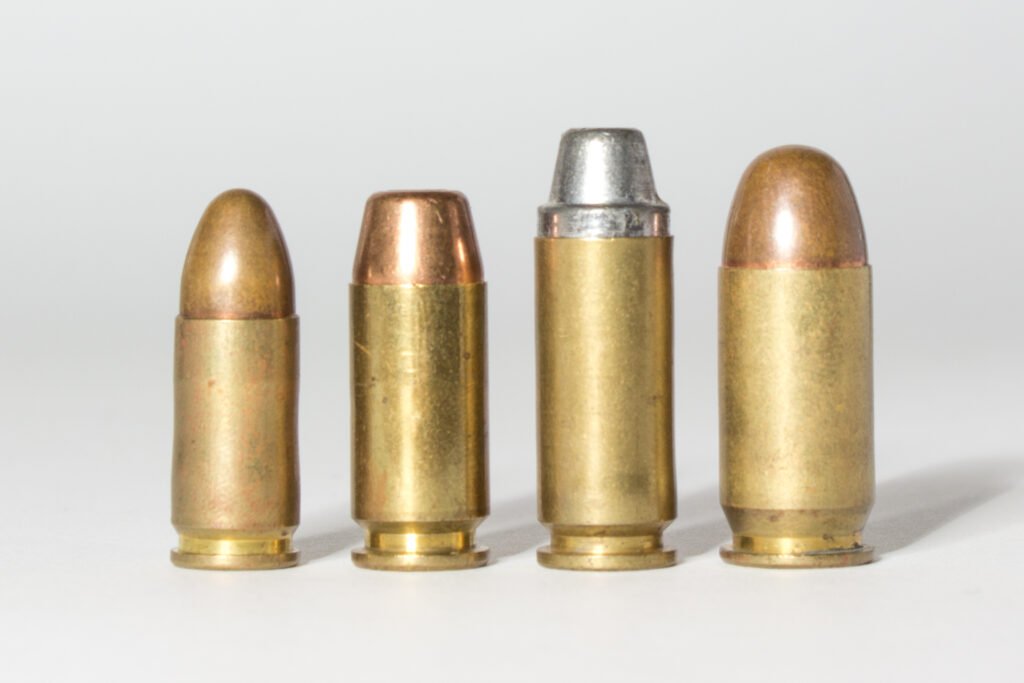Why Does Everyone Hate .40 S&W?

There’s no doubt about it—we gun guys like to argue. If you’ve been in the gun world long enough, you’ve witnessed and probably even participated in a few of the many holy wars pervading the community. Do you dial for elevation or hold over when shooting at range with a riflescope? Which platform is better, AR-15 or the AK-47? Are Glocks worth the hype or overrated? Be careful how you answer, for your response could land you in hot water with the regulars at your favorite local gun shop or range. Caliber wars have always been a particular favorite; the 9mm Parabellum fans and .45 ACP enjoyers are already well into their second century of debate with no clear end in sight, but no matter what, both cults can agree to hate .40 Smith & Wesson. Even people with no proverbial dog in the fight so enjoy cracking jokes at the .40’s expense that the round has become the firearm community’s agreed-upon punching bag. Why, though, does it have such a bad reputation? Does .40 S&W really deserve all the hate, or is it simply misunderstood?
First, let’s talk about why the .40 Smith & Wesson exists in the first place. Back in 1986, a group of FBI agents in South Florida attempted to apprehend a pair of heavily armed suspects; what should have been a routine felony traffic stop instead devolved into a long, brutal gun battle we now call the Miami-Dade shootout. Both suspects were shot several times early on in the gunfight but managed to fight through potentially lethal gunshot wounds, going on to kill two agents and wound five more. FBI leadership took this to mean that the standard-issue 9×19 and .38 Special +P had insufficient wounding capabilities and were due for replacement with something more likely to stop a suspect in one shot.
Around that same time, the new 10mm Norma Automatic cartridge was the new hotness in the gun world, championed by its legendary co-designer Jeff Cooper as the final word in pistol power. The FBI was very interested—the 10mm offered unparalleled penetration in soft targets and delivered a tremendous amount of energy even after punching through light barriers, resulting in far superior performance in ballistics gel testing. In the early 1990s, the FBI eagerly ordered batches of shiny new Smith & Wesson 10mm autoloaders, began issuing them in earnest, then immediately found itself dealing with a new problem.
As anyone can guess, such a potent round is bound to produce a hefty recoil impulse, which in turn forces the shooter to slow down; it also greatly increases the amount of training required to bring agents, especially smaller-statured ones, to an appropriate level of proficiency. The chief of the FBI’s Firearms Training Unit cooked up a batch of reduced-power handloads whose softer recoil allowed for higher scores on the qualification range, drawing attention from the Bureau’s leadership. Smith & Wesson realized the lighter powder charge could fit into a smaller case, allowing their engineers to fit the round into the smaller frame of a pistol originally designed for 9mm Parabellum. Unfortunately for them, Glock beat them to the punch by a few weeks in releasing the first pistol chambered for the new “10mm short,” officially dubbed “.40 Smith & Wesson.” Replacing the Smith & Wesson 1076, the Glock 22 became the FBI’s standard service weapon in 1997.
Because most law enforcement agencies lack the resources to perform their own ballistic testing, they tend to issue whatever handguns have already been approved by the FBI or U.S. military. Almost immediately, .40 S&W took the market by storm. Police departments liked the round for its ability to easily punch through car doors and automotive glass and incapacitate suspects who’d taken enough narcotics to shrug off smaller gunshot wounds. Civilians were intrigued by the prospect of, according to the marketing of the day, the “stopping power” of a .45 combined with the magazine capacity of a 9mm. The .40 was the new hotness and everyone just had to have a pistol chambered for it… until they didn’t. What happened?
The FBI has its own set of tightly controlled ammunition testing protocols which calculate a numerical score based on penetration and expansion in a standard gel medium. After Miami-Dade, the major ammunition manufacturers began redesigning their hollow-point bullets for better and more consistent terminal performance to meet the FBI’s stringent new standards. That wave of innovation produced many of the defensive and duty loads we now take for granted, all of which are far superior to anything available in 1986. Ammunition technology has now improved to the point that a high-quality modern 9mm Parabellum JHP scores nearly as well in FBI testing as commonly available .40 S&W loads did when that round was adopted. Recognizing this, the FBI and many smaller law enforcement agencies have been shifting back to the good old 9mm over the past few years.
Given the above, what’s the upshot for civilian shooters? Well, .40 Smith & Wesson is still objectively more powerful than 9mm, no matter how you slice it. Compared like-for-like, the .40 will produce slightly more severe wounds in the target, offering a slightly greater chance of incapacitation with each shot. That said, the softer recoiling 9mm is easier to shoot rapidly and accurately, allowing for more hits on target in less time. The FBI and many other law enforcement agencies consider the speed and accuracy advantages to outweigh the benefits of better barrier penetration and slightly larger wounds produced by each shot. In restricted states like California, the magazine capacity difference is irrelevant, but the significant cost advantage of 9mm ammunition allow for more training on the same budget. All in all, the overwhelming majority of people prefer 9×19.
Whatever your reasoning, the choice in calibers is yours and yours alone; you don’t have to let anyone dictate how you should and should not arm yourself. If your carry gun is chambered for 9mm Parabellum, good for you. If you already carry a .40 and you know you can shoot it well, more power to you. If you don’t have either yet and you’re trying to decide, I and most others generally recommend you start with the cheaper and easier to shoot 9mm before potentially branching out into other options. Whatever you choose, just make sure you carry high-quality defensive ammunition and train regularly—it doesn’t matter how powerful the round is if it misses the target.
